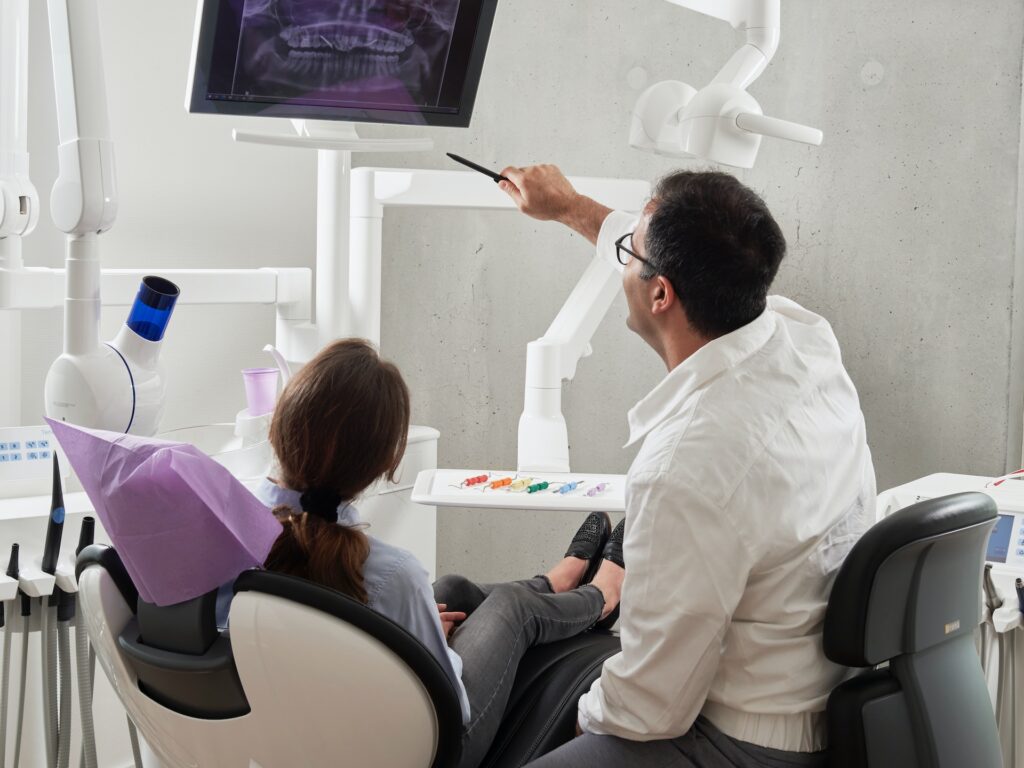Dental technology is constantly evolving, leading to advancements that have transformed dentistry. For example, CEREC technology has eliminated the need for multiple appointments, physical impressions, and temporary restorations, significantly improving the patient experience. Let’s take a look at the history of CEREC and the other technologies that enhance its capabilities.
The Evolution of Dental Technology
Before CEREC
In the past, dental restorations like crowns and bridges could only be crafted through a time-consuming and uncomfortable process. First, messy putty impressions were taken of the mouth using a mold. Then the impression had to be sent to labs that took several weeks to produce a restoration. In the meantime, you would have to wear a temporary restoration until the final crown or bridge was ready, meaning multiple dental visits. While some dental practices still use this conventional method, at Copper Creek Dental we use CEREC technology to ensure faster, more comfortable appointments.
The Early Introduction of CEREC
Chairside Economical Restoration of Esthetic Ceramics (CEREC) emerged as a game-changer in 1985. Developed by Dentsply Sirona, CEREC was the first system to enable onsite production of ceramic crowns, veneers, and other restorations in a single dental visit. That means your mouth is examined and we take an impression, then the restoration is designed, fabricated, and placed all on the same day.
The entire process is not only faster and more convenient, but also more precise. CEREC digitized the design and fabrication process by implementing CAD/CAM systems and intraoral scanners, meaning no more gooey impressions. This ensures long-lasting restorations that fit comfortably and look as natural as possible.
CEREC in Recent Years
What made CEREC so revolutionary in the first place is how it streamlined workflows to ensure more efficient dental treatments. But the technology has come a long way since its introduction in the 1980s. In recent years, CEREC software has been integrated with artificial intelligence (AI) to perfect the design process. AI algorithms are able to analyze data and provide valuable insights that produce even more functional, aesthetically pleasing dental restorations.
Additional Technologies That Enhance CEREC
Intraoral Scanners
Intraoral scanners such as the CEREC Primescan are pivotal in the CEREC process. Instead of using an uncomfortable mold, an intraoral scanner takes a highly accurate digital impression of the mouth. The digital images are uploaded to CAD/CAM software that we use to create a 3D model of your teeth and custom design a restoration that perfectly fits your mouth.
CBCT Technology
CEREC technology is primarily used to create same-day restorations such as dental crowns. However, CEREC is sometimes used with CBCT technology like the Axeos CBCT machine to aid in planning a dental implant surgery. This is because dental implants must be placed with the utmost precision to ensure optimal functionality and aesthetics.
Cone Beam Computed Tomography (CBCT) produces detailed 3D images of the whole mouth, including teeth, bone structure, nerves, and sinuses. Using CEREC digital impressions along with CBCT 3D scans helps us determine the best placement for the implant and create a comprehensive treatment plan.
Transform Your Smile with Same-Day CEREC Crowns
CEREC and its peripheral technologies have transformed the way dental professionals approach and deliver dental care. At Copper Creek Dental in Daybreak, your comfort is our top priority. We use CEREC technology to produce beautiful and durable dental crowns in a single appointment. If you’re concerned about your dental health and think you may need a crown or other treatment, give us a call at 801-280-1911 to make an appointment.
Images used under creative commons license – commercial use (12/8/2023). Photo by Caroline LM on Unsplash

